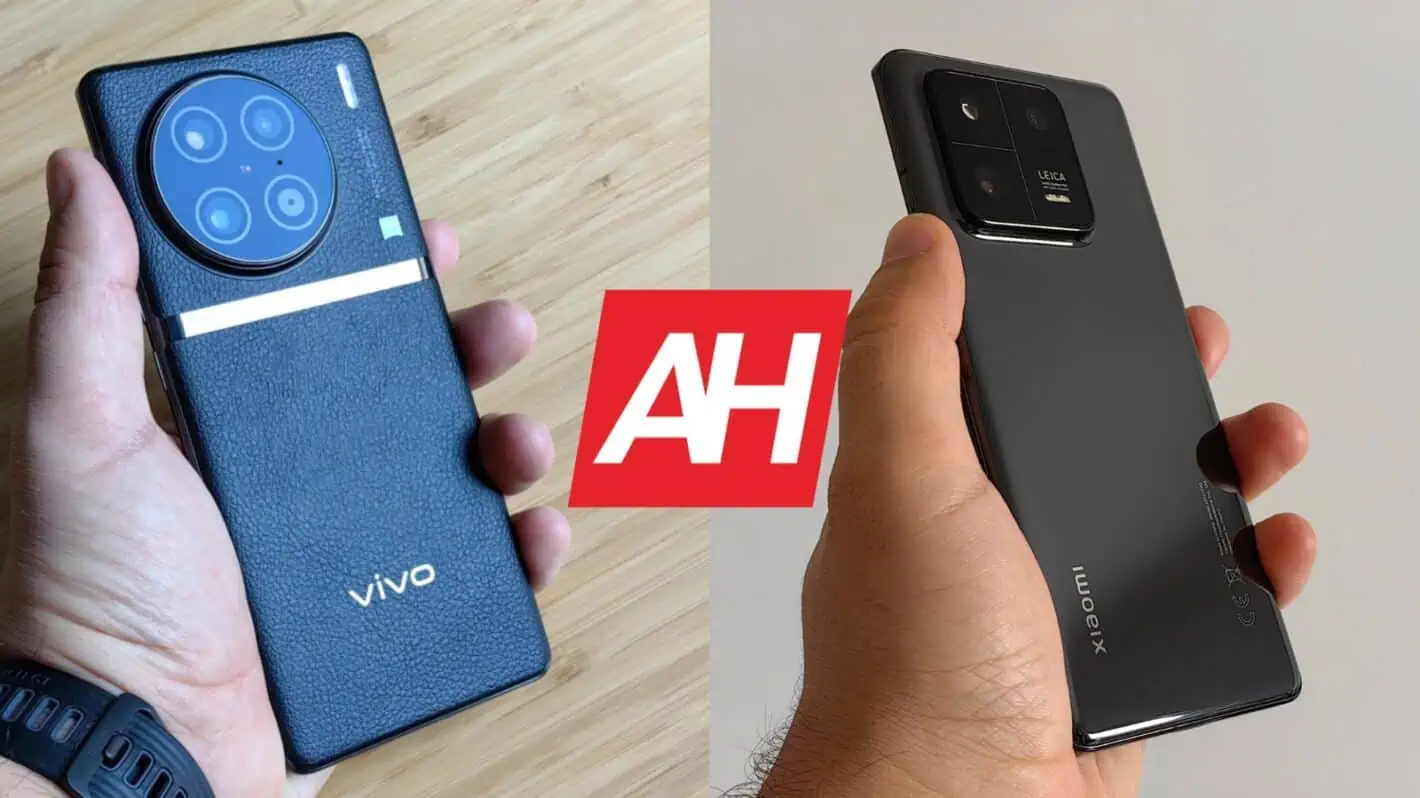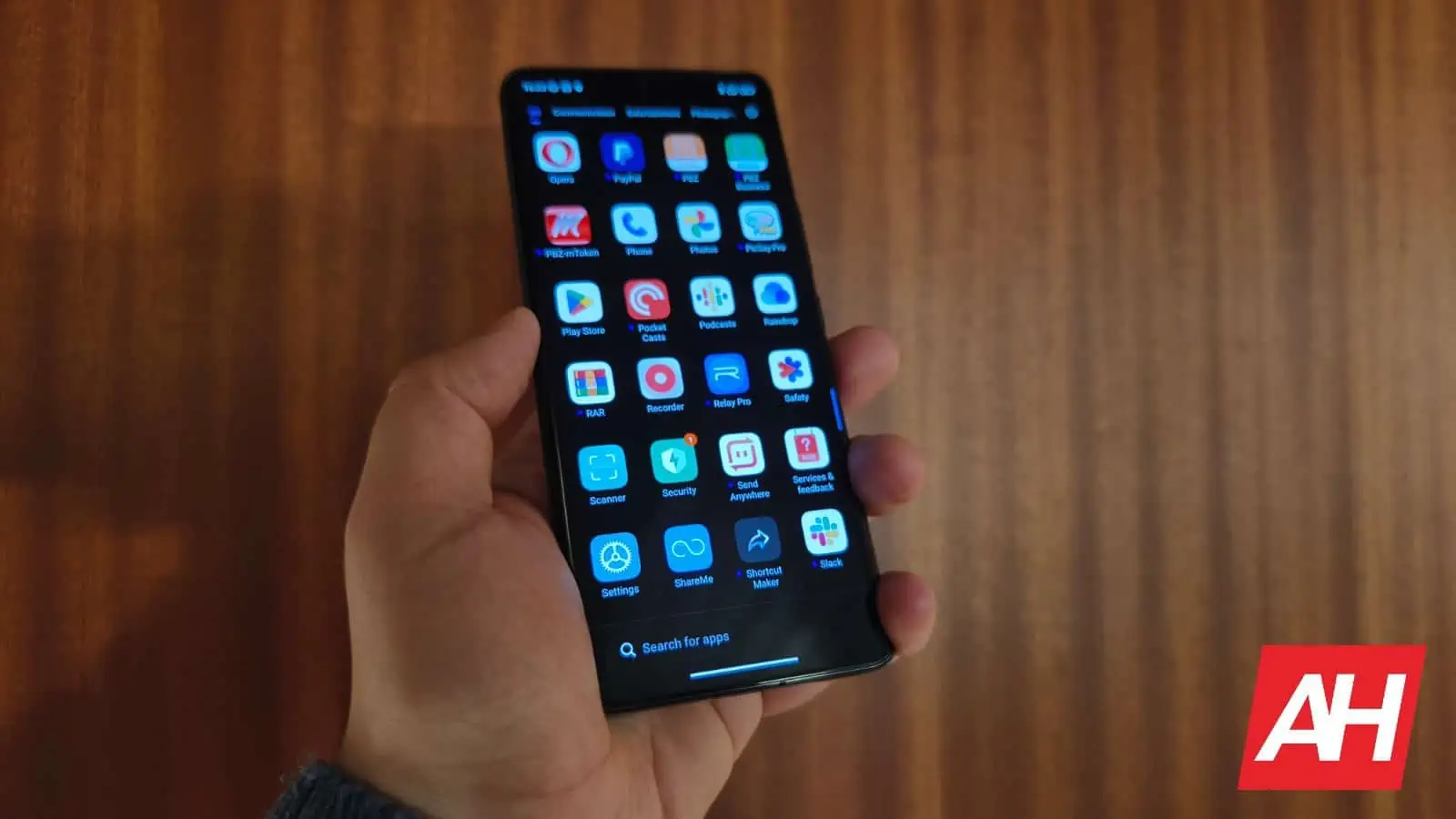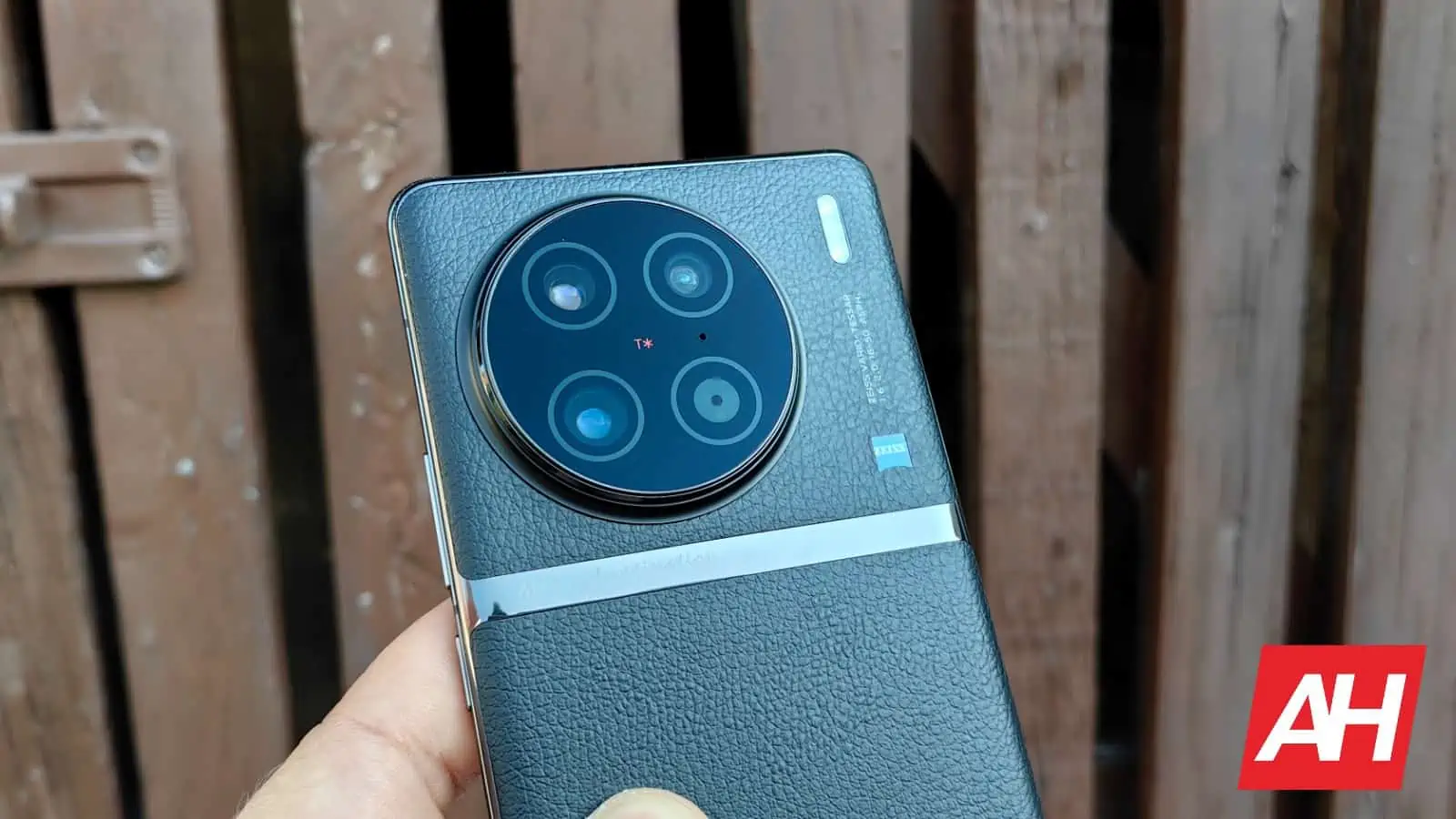The time has come to compare two smartphones with 1-inch camera sensors, the Vivo X90 Pro vs Xiaomi 13 Pro. I’ve reviewed both of these phones quite recently, so the impressions are still fresh on both of them. They do have the same main camera sensors, but they’re very different in many ways. Even the camera performance is considerably different, so there’s plenty to talk about here.
We’ll first list the specifications of these two phones, and will then move on to a number of other categories. These two handsets do look somewhat similar from the front, but that’s where the similarities end, design-wise. They also have different software, different displays, different SoCs, and more. So, let’s get things started, shall we?
Specs
| Vivo X90 Pro | Xiaomi 13 Pro | |
| Screen size | 6.78-inch AMOLED display (120Hz refresh rate, curved, 1,300 nits peak brightness, LTPO) | 6.73-inch QHD+ LTPO AMOLED display (curved, 120Hz adaptive refresh rate, 1,900 nits peak brightness) |
| Screen resolution | 2800 x 1260 | 3200 x 1440 |
| SoC | MediaTek Dimensity 9200 | Qualcomm Snapdragon 8 Gen 2 |
| RAM | 12GB (LPDDR5X) | 12GB (LPDDR5X) |
| Storage | 256GB, non-expandable (UFS 4.0) | 256GB/512GB, non-expandable (UFS 4.0) |
| Rear cameras | 50.3MP (f/1.8 aperture, 23mm lens, 1.6um pixel size, Dual Pixel PDAF, OIS) 12MP (ultrawide, f/2.0 aperture, 108-degree FoV) 50MP (f/1.6 aperture, 50mm lens, 0.7um pixel size, 2x optical zoom, OIS) |
50.3MP (Sony’s IMX989 1-inch sensor, f/1.9 aperture, 1.6um pixel size, Dual Pixel PDAF, OIS) 50MP (ultrawide, f/2.2 aperture, 14mm lens, 115-degree FoV) 50 MP (telephoto, 3.2x optical zoom, f/2.0 aperture, PDAF) Leica |
| Front cameras | 32MP (f/2.5 aperture, 24mm lens, 0.8um pixel size) | 32MP |
| Battery | 4,870mAh, non-removable, 120W wired charging, 50W wireless charging, reverse wired charging Charger included |
4,820mAh, non-removable, 120W wired charging, 50W wireless charging, 10W reverse wireless charging Charger included |
| Dimensions | 164.1 x 74.5 x 9.3mm | 162.9 x 74.6 x 8.7mm |
| Weight | 214.9 grams | 229 grams |
| Connectivity | 5G, LTE, NFC, Bluetooth 5.3, Wi-Fi, USB Type-C | 5G, LTE, NFC, Bluetooth 5.3, Wi-Fi, USB Type-C |
| Security | Facial scanning (front camera) In-display fingerprint scanner (optical) |
In-display fingerprint scanner (optical) |
| OS | Android 13 Funtouch 13 |
Android 13 MIUI 14 |
| Price | N/A | €1,299/TBA |
| Buy | Vivo | Xiaomi |
Vivo X90 Pro vs Xiaomi 13 Pro: Design
Both of these phones are quite large. The Vivo X90 Pro is slightly taller and thicker, but they’re almost equally wide. The Xiaomi 13 Pro is heavier, though, mainly due to its ceramic backplate. The vegan leather model is lighter, but that one is available in China only, Xiaomi launched only the ceramic variant globally. The Vivo X90 Pro has a vegan leather backplate, though, at least its global model does. Both phones are IP68 certified for water and dust resistance.
The Vivo X90 Pro is less slippery due to its backplate, that’s for sure. Both devices have a centered display camera hole, and very thin bezels. Both of them also have curve displays, but the curvature is different. The curves on the Xiaomi 13 Pro display are less pronounced, and most of you will probably prefer that. On the back, you’ll notice large camera islands on both phones, and on both phones, they’re placed in the top-left corner.
Both phones have three cameras on the back, though the camera islands do look different. ZEISS optics are utilized on the Vivo X90 Pro, while Xiaomi partnered up with Leica. Both of these smartphones feel premium in the hand, that’s hard to deny. They also fit in the hand nicely. Using a case is recommended, though, as neither phone is particularly grippy, even though the Vivo X90 Pro is grippier. Their camera islands also protrude on the back quite a bit.
Vivo X90 Pro vs Xiaomi 13 Pro: Display
The Vivo X90 Pro features a 6.78-inch 2800 x 1260 curved AMOLED display. This is an LTPO display, by the way, and its refresh rate goes up to 120Hz. It can project up to 1 billion colors, and it does support HDR10+ content. Its maximum brightness is 1,300 nits. The phone offers a 20:9 display aspect ratio.
The Xiaomi 13 Pro, on the flip side, has a 6.73-inch QHD+ (3200 x 1440) LTPO AMOLED panel. That display is curved, and its refresh rate goes up to 120Hz. Dolby Vision is supported here, and the display can project up to 1 billion colors. Its brightness goes up to 1,900 nits. The Xiaomi 13 PRo’s display has a 20:9 aspect ratio, and it is protected by the Gorilla Glass Victus, in case you were wondering.
Both of these displays are excellent in real-life use, but the Xiaomi 13 Pro does have one major advantage. That advantage comes in the form of brightness. It gets noticeably brighter in direct sunlight, so if that’s important to you, it’s worth noting. Other than that, they both do the trick. They’re fluid, very responsive, the colors are vivid on both, and both displays have excellent viewing angles. The blacks are also deep on both of them.
Vivo X90 Pro vs Xiaomi 13 Pro: Performance
The Vivo X90 Pro utilizes the MediaTek Dimensity 9200 SoC. In addition to that, Vivo included 12GB of LPDDR5X RAM and UFS 4.0 flash storage. The Xiaomi 13 Pro is fueled by the Snapdragon 8 Gen 2 SoC, while it includes 12GB of LPDDR5X RAM and UFS 4.0 flash storage. Both of these phones are immensely powerful, and the MediaTek Dimensity 9200 may technically be inferior to the Snapdragon 8 Gen 2, but it’s a true flagship SoC, and it’s keeping up nicely.
Both of these phones performed admirably during my usage. They flew through everything I threw at them. Everyday tasks are a breeze for both phones, and even gaming, actually. The MediaTek Dimensity 9200 had no issues running even the most demanding games, and neither did the Snapdragon 8 Gen 2. We did notice the difference between the two SoCs, but not in the performance department, more on that later. When it comes to performance, they certainly are on par with each other, you really can’t go wrong here.
Vivo X90 Pro vs Xiaomi 13 Pro: Battery
The Vivo X90 Pro comes with a 4,870mAh battery, while the Xiaomi 13 Pro has a 4,820mAh battery pack. They both offered good battery life, but the Xiaomi 13 Pro was better in our case. The Snapdragon 8 Gen 2 is probably the reason why. That SoC has great power consumption, and the Xiaomi 13 Pro also offered better standby battery than the Vivo X90 Pro. I was able to pull out way over 7 hours of screen-on-time with the phone, crossing the 8-hour mark is not a problem. The Vivo X90 Pro, on the other hand, almost always danced between 6 and 7 hours of screen-on-time.
Do note that I did not play games on either phone, other for testing purposes (1 day). I did submit them to various other tasks, ranging from messaging and browsing, to streaming audio and watching TikTok. Your mileage may vary, of course, as you’ll have different apps installed, different usage, and different signal strengths during your usage. So, you may get considerably different results.
When it comes to charging, both of these phones truly shine. They both support 120W wired, and 50W wireless, on top of reverse wireless charging. On top of that, they also come with a charger in the box. Yes, you get a 120W charger with both phones, so you won’t have to buy one separately, which is always nice to see.
Vivo X90 Pro vs Xiaomi 13 Pro: Cameras
The Vivo X90 Pro is equipped with a 50-megapixel main camera (Sony’s IMX989 1-inch sensor), a 12-megapixel ultrawide unit (108-degree FoV), and a 50-megapixel telephoto camera (2x optical zoom). The Xiaomi 13 Pro, on the flip side, comes with a 50-megapixel main camera (Sony’s IMX989 1-inch sensor), a 50-megapixel ultrawide camera (115-degree FoV), and a 50-megapixel telephoto camera.
These two phones have the same main camera sensors, but different lenses, and different image processing as well. The images from both phones look great, but in entirely different ways. The shots from the Xiaomi 13 Pro tend to be darker, with a moodier look, on purpose. The Vivo X90 Pro is probably what most people will prefer due to a more vivid look. We’ve also noticed that the Vivo X90 Pro does a bit better in HDR situations, and the images also tend to look sharper at times. The Xiaomi 13 Pro is doing a great job, but a camera consistency update is needed. Well, at least it was at the time we reviewed it. The Vivo X90 Pro is more consistent when it comes to producing outstanding images.
Both devices do a great job in low light, while the Xiaomi 13 Pro excels in portrait photography. Xiaomi and Leica really created something special in that regard thanks to the phone’s telephoto camera, and processing. The ultrawide cameras are good on both phones, and tend to provide similar-style images to the main cameras. The video recording is good on both, but not to the level of the latest iPhone Pro models, or the Galaxy S23 Ultra.
Audio
Both of these devices feature stereo speakers, and both sets are quite loud. They also provide detailed and well-balanced sound, while you also do get a bit of bass mixed in there. These are good speakers, that’s for sure.
What you won’t find on either phone is a 3.5mm headphone jack. In order to get your headphones hooked up via a wire, you’ll need to use a dongle. For wireless connections, however, Bluetooth 5.3 is supported on both phones.



